Thought leaders are the influencers of the business world. Right? Then you’re probably curious how to become a thought leader in your industry.
If you want to become a thought leader, you need to find a way to prove your expertise to your audience. Ksawery Lisinski, VP of Product Management at Elements.cloud, saw an opportunity in gauging the organizational maturity in companies, providing respondents with professional feedback.
His approach? An online maturity assessment for organizations to discover how they perform as a business, and where investments are necessary.
Let me take you through the different steps he undertook, and look at the results he booked.
Rather watch than read? Go straight to the interview video 👇
Who is Ksawery Lisinski?
Ksawery Lisinski is Vice President of Product Management at Elements.cloud.
Elements.cloud is a SaaS company that provides a rich platform to service the Salesforce marketplace. They help organizations design better Salesforce solutions. You can think of Elements as a product management platform for Salesforce.
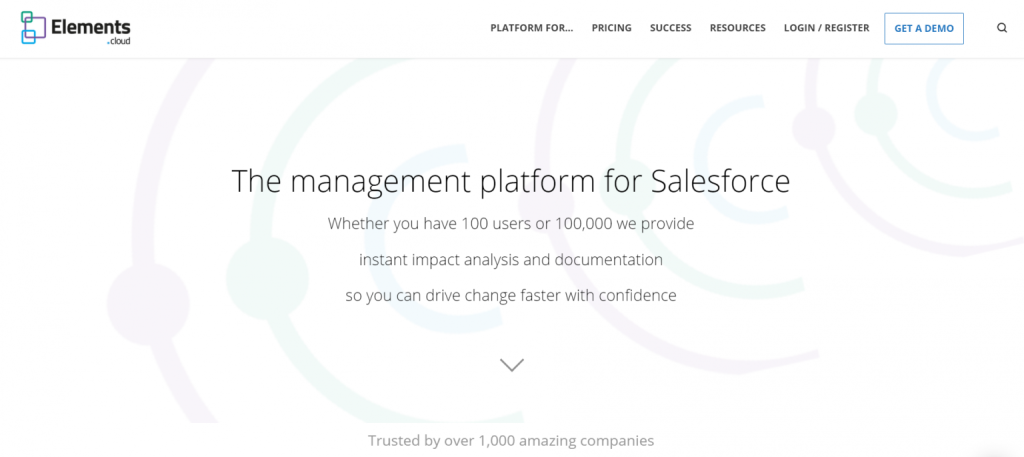
Thought leadership in 6 steps
Step 1: What are successful thought leaders doing?
Ksawery started to see companies who wanted to position themselves as thought leaders in their respective areas, by offering maturity assessments.
Ksawery: “You answer a list of questions and it gives you this nice PDF report at the end, which tells you how good you are, and how you score against the market average.
I’ve done such an assessment myself on two different occasions. It felt like it was relevant to me and I was interested.
I was blown away by these experiences. We could check the maturity of our product management practice and compare against 1000 responses from across the globe. The score indicated how well we were doing against others, and highlighted our problem areas. I was blown away by what it told us and what conversations it started. And that was the experience that led me to believe that we should have something similar.”
Step 2: Analyze the market for your product
Ksawery notes that they have a disruptive product. The problem with disruptive products, especially if you are creating something completely new, is that many people don’t recognize what you’re selling, yet. They are not searching for specific terms or product features, because they don’t know what the options are.
Ksawery: “There is a bit of education that needs to take place before your product achieves that mainstream recognition, like ‘Oh, that thing. Yes, we need that!’
Ksawery: “I’m a product manager, I’m not specialized in marketing. But I remember pitching the marketing team saying: ‘You know guys, if our challenge is getting high quality leads of a very narrow group of people who are mature enough to recognize the pains we are addressing and recognize the value proposition that we are trying to sell, there might be a bit of education we still have to do. I think I’ve got a way.”
“We realized we might’ve found a very effective solution to collect highly qualified leads. And that’s how the journey started for us.”
Step 3: Design a questionnaire
If they wanted to educate that narrow group of people eligible for their product, they needed this group to assess their pain points.
With a management self-assessment, companies are able to measure the maturity in certain fields with a maturity model. This will uncover the need for professional training or support. So, it’s important to ask the right questions.
Ksawery and his team decided to design a large questionnaire with 64 questions. It takes about 20 to 30 minutes to fill it out.

Ksawery: “The questions are very specific and they force you to think. It’s not something you do over a 5-minute coffee break.
Not every person in an organization will be able to fill this out. But that was by design. It wouldn’t go viral, that was not the intention. We just needed it to get to those few key decision-makers and those mature personas we were looking for. It’s about quality, not quantity. That was our approach.
When we get new customers signing up, they often have misconceptions about what the product is and what they can do with it. They often think very narrowly. We encourage them, as part of the trial process, to go through this questionnaire and think actively about certain things.”
Step 4: Find an assessment tool
Ksawery came across Pointerpro through a good old-fashioned Google search.
Ksawery: “I was focussing on the functionality: I needed a survey, and I needed to generate a PDF report based on the survey results. How it would work together, I didn’t know. In any case, we didn’t have the time, resources or expertise to build it ourselves.
So I reviewed the websites of various vendors. I came across survey tools with 10.000 features, but they never mentioned that particular thing I was looking for.
Pointerpro vs SurveyMonkey
The only two tools Ksawery decided to evaluate were Pointerpro and SurveyMonkey.
"The reason I ended up recommending Pointerpro was a combination of a much better product, and way better customer support!"
Ksawery: “Your process for setting the trials and letting people experience the product was so good. Ever since then, I’ve been saying to our sales operations team that we should copy what you do. (laughs)
I know your tool does a lot of things, and I think we have a very similar ‘problem’. We have a very broad platform that serves various needs, various personas. And the problem is, when you let your prospects wander around and try everything, there is a big chance they get confused or go down a rabbit hole and lose sight of where they are and what’s happening.
By the time we had the 30-minute demo with someone in your team, they already had an environment ready for me with an example of a management assessment. The example was a 100% perfect fit for what I was looking for.
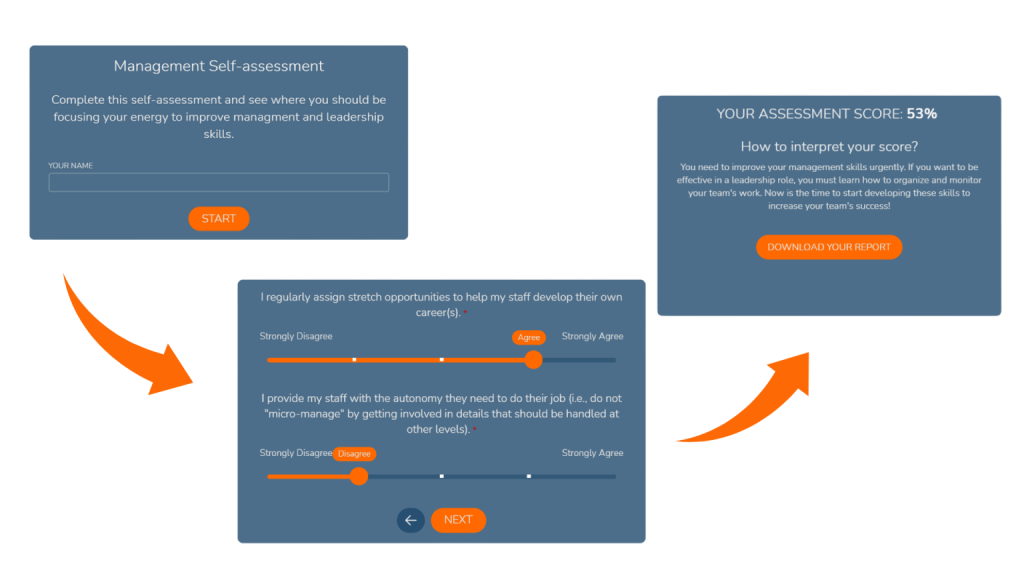
They walked me through the features, how it worked and I was like ‘Yes, that’s precisely what I’m looking for, A to Z. You nailed it!’
The experience with SurveyMonkey was the opposite. Their website informed me that they support questionnaires that generated a PDF report. But then I realized, after signing up for SurveyMonkey, that the generation of the PDF at the end, was actually no part of SurveyMonkey. It was an additional add-on, and I was completely confused.
I didn’t get any customer support, even though I asked for it. So I gave up after 3 mails, I didn’t have time for this. By that time, I was already playing with Pointerpro. I thought: This is working, this is precisely what we need. I’m blown away with what I’m using here right now.”
Step 5: Create a professional assessment
Once you’ve decided which assessment tool to work with, you can implement your ideas into the application.
Explain the purpose of the assessment
Ksawery: “At the beginning of the assessment, we explain what we are going to measure. We refer to the Salesforce implementation life cycle and how you take your ideas for the entire development process in the Salesforce world.

Implement your questions
Coming up with the questions and hints was easy. We’ve played with multiple different designs. We had each section dedicated to a different phase and we just asked people, on a scale from 0 to 10, how much they agree with given statements.
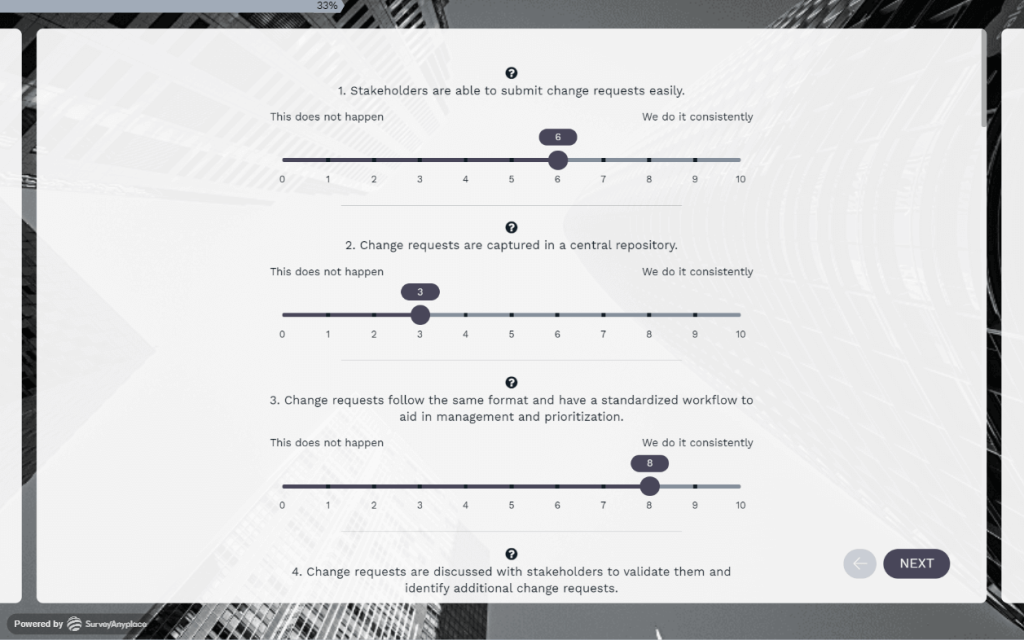
Sometimes we struggled with how to make questions short and understandable. But since we deal with a very specialized area, you need to explain the definitions, terms.
In the very first version, each of those questions were 2 or 3 sentences long. We then discovered this really cool feature, where you just click on the question mark where you can explain precisely what we mean, without taking out the precious layout. That was brilliant.
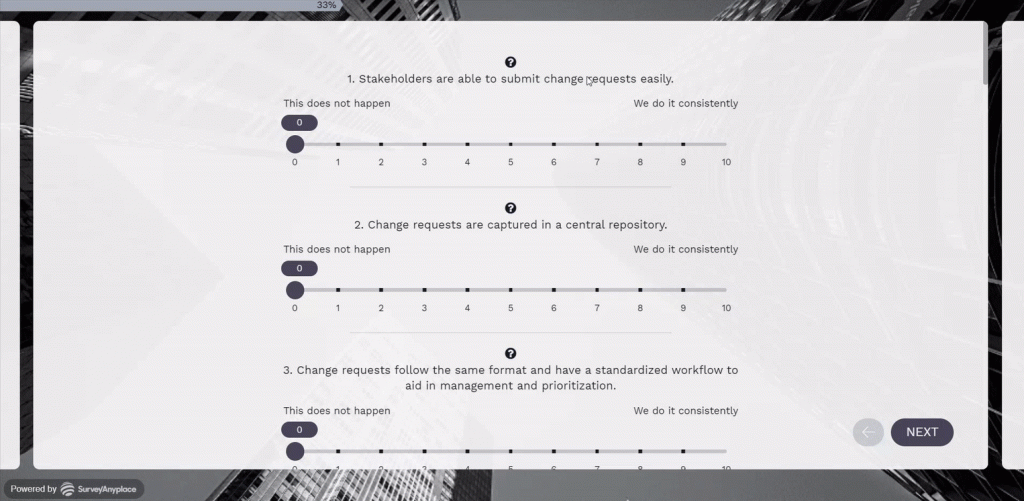
In order for the data to be consistent, all the 64 questions are like that, they follow the same format. The experience is fundamentally the same throughout the entire assessment.”
Customized feedback
An online assessment can feel distant and impersonal. Personalize your feedback through customized messages. This is also what Elements did. They got the most out of Pointerpro as possible:
Ksawery: “This tool is actually really powerful in terms of the design process. It was so sophisticated that it made us realize there are a lot of considerations we needed to think about, which we never considered before.
For example, we customized the messages in the report, based on the scores. With the tool, we could make the report paragraphs variable, according to the different scores.
So if your score is below what we consider ‘good’, we give you a slightly different message with more recommendations and more resources.
When it’s ‘good’, we don’t want to oversell, so we’ll tap you on the back saying ‘good job there!’. The amount of variable inputs is endless.”
Quick report generation
As a thought leader, your respondents expect swift and professional feedback. Ksawery offers his respondents a personalized PDF report, right after his respondents have completed the assessment. Respondents can then easily share this PDF report with their colleagues or superiors.
Ksawery: “When you finish the entire maturity assessment, you receive a score and you can download a personalized PDF report.
One thing everyone has said about that part, is how extremely quick it is for the report to be generated. That’s just amazing.
Another nice touch was, as it was loading, there were these phrases appearing ‘calculating results … adding some paint …’. It made it feel more dynamic. It’s a good alternative to waiting for the screen for something to happen.
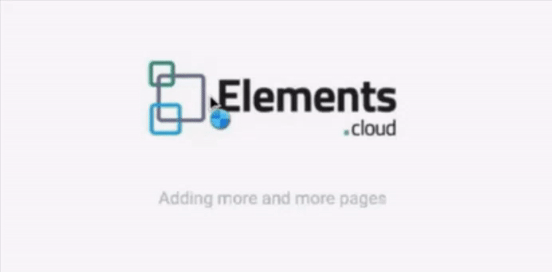
And this is our 20-page report that we generated. Something lots of people love looking at, because it’s 60, 70 domains we score people on:
Step 6: Share the results in a whitepaper, blog article or landing page
This is the last step, and probably one of the most important ones if you want to become a respected thought leader in your area.
Once the responses come rolling in, you’ll be able to gather a great amount of data. Share this interesting information with your audience in the form of statistics, charts and infographics. Reveal benchmarks for each competency, so that readers can compare their score. This will entice more people to take the assessment, getting you even more data for you to update the number regularly.
You’ll notice that the more data you’ll gather, the more blogs will refer to you. This is a nice surplus, making your website domain rank higher when people search for terms in your field of expertise.
Ksawery: “One of the really great things is how easy it is to build charts and utilize the data with this tool. When we arrive at 120 responses we want to compare the best-run score to the average. We can offer insights and recommendations linked to particular scores. We can refer to a specific resource they might find useful to improve.
A gift that keeps on giving
For Ksawery and his team, the Pointerpro tool made a lot of difference for their campaign. Not only in their effort to become a thought leader in their industry, but also purely in marketing terms the results exceeded their expectations.
The tool
Ksawery: “We were quite frankly surprised, almost unprepared, for the amount of options we were given. Still, the tool is actually super easy to use. It is actually a joy using it!
"We were quite frankly surprised, almost unprepared, for the amount of options we were given. Still, the tool is actually super easy to use. It is actually a joy using it!"
It allows us to do things we never thought possible before. That was the challenge. We kept on discovering new options and it was exciting to find out how we could put them to good use.
The future
What we like about this particular campaign is that it’s almost a gift that keeps on giving. We just had 114 organizations that filled this out. It’s not a massive campaign, but getting 114 people to actually go through 20 to 30 minutes of answering detailed questions is ‘pretty darn good’ actually.
The expectation is that at some point we can produce a report where we can present what we’ve learned from 120 or 150 organizations that self-assessed themselves on how well they are running their Salesforce platform.
So it’s not just a marketing asset in its own right. The more data we get, the more it allows us to gather all the results, produce aggregates, and run campaigns based on these results. We can also write blog articles with what we’ve learned.
It’s not meant to be a viral mass marketing tool, but it is definitely a really great tool. We found so many ways utilizing it. It’s brilliant!
The return on investment
So far, we had 114 respondents filling out the assessment. Let me explain the results from a financial point of view.
Within the first month or two, the tool paid for itself. And when I say “paid for itself”, I don’t mean “paid” as in “equal amount”. We scored on the back of that additionally 10 to 12K, so we made 4 times more in the first 2 months of running this campaign than we actually paid for the tool itself. That is money well spent!
"If we don’t do anything with it for the next 10 months, we still earn some money on that investment. So the return was phenomenal."
We are planning more campaigning in the second quarter of this year. We got the first 100 respondents really quickly. Faster than we assumed it would take.
Some of our marketers were worried about that. It’s an initiative that takes time and dedication. We took a risk, but that risk paid off and it turns out that we made a good bet. Financially, the return on investment (ROI) made it absolutely worth it!”
Attracting businesses to take the assessment
In order to attract people to take the assessment, the marketing team engaged in paid advertising, running two intensive campaigns. They resulted in a spike in participations, but the largest share of responses still came in organically.
Ksawery: “We did do some paid advertising to attract people to take the assessment. We used social media, and we also use a tool called ‘Intercom’ for customer communication on our website and platform. We pushed the assessment there, through a pop-up, and invited people to participate. We also sent it to quite a few partners that work closely with us, in consultation terms. They passed it onto someone else. So it wasn’t fully organic.
We ran one or two campaigns, but not very intensively. We did a more intensive campaign twice. That’s when we had two spikes: 20 responses and then around 17. That makes up 37 reports of the total of 114 people actually completing the whole assessment. The remaining 70 something were all organic.”
Tips
Ksawery has two tips for people who want to use this tool like he did:Ksawery: “I love the idea of using assessments and reporting to generate qualified leads. I came up with it. And I campaigned quite a lot. I was strongly involved in creating the report and questions, and the format. Since then, I’ve given this away to the marketing team, in terms of operationalizing it.
The demo PDF report
We created our own survey with a separate report, linked to that survey. Originally, we wanted to create our own thing from scratch. But the demo PDF report that you gave us was actually really good. So we thought: “Why don’t we just copy the whole thing and then apply some small changes and save ourselves some time?” That’s what we did.
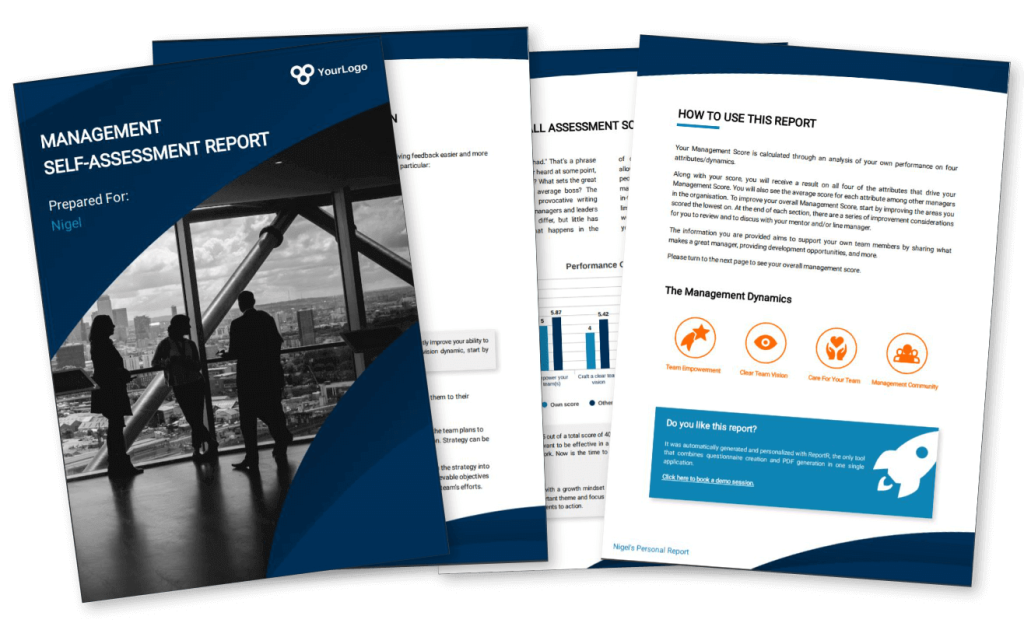
We tweaked the styling so it’s our color schemes and it definitely saved us some time. That was really good.
The support library
I think the support library is really good. Every time I had a question, the support library was pretty good at explaining how it worked, and how and when to use a certain feature. So I had no trouble whatsoever learning how to use the platform.
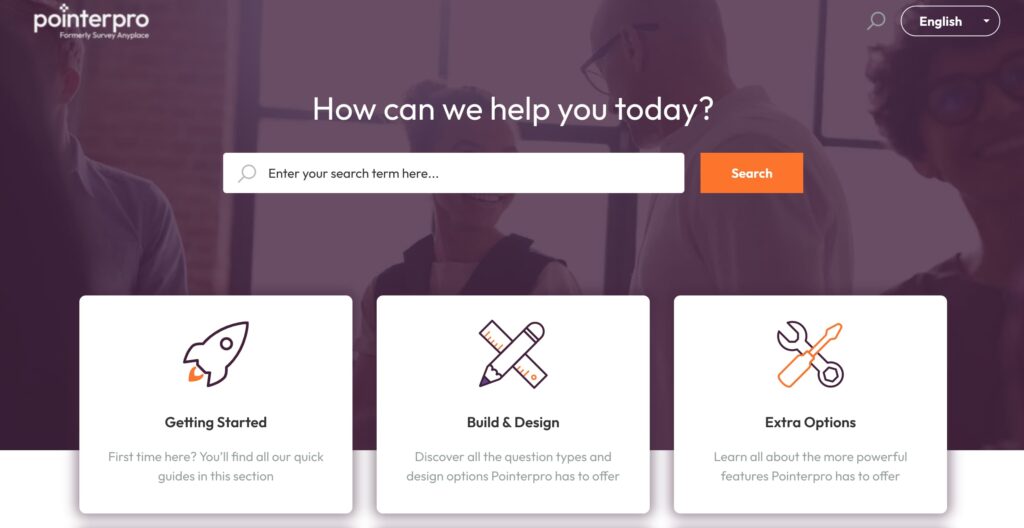
It is also fairly intuitive. It might sound scary because of all these customizations that are available. But actually, at least for me, it took me not too long to understand the whole set up, how it works, and how all the components relate to each other. It’s not overwhelming. It’s actually pretty easy to get it.
“Thank you for building a really good product”
Ksawery enthusiastically concludes:
“I was the one who came back to you after the first 2 or 3 months saying: “Guys, if you ever need a recommendation, call me, because I’m blown away with what you developed. So, thank you for building a really good product and a great team that supports it!”





